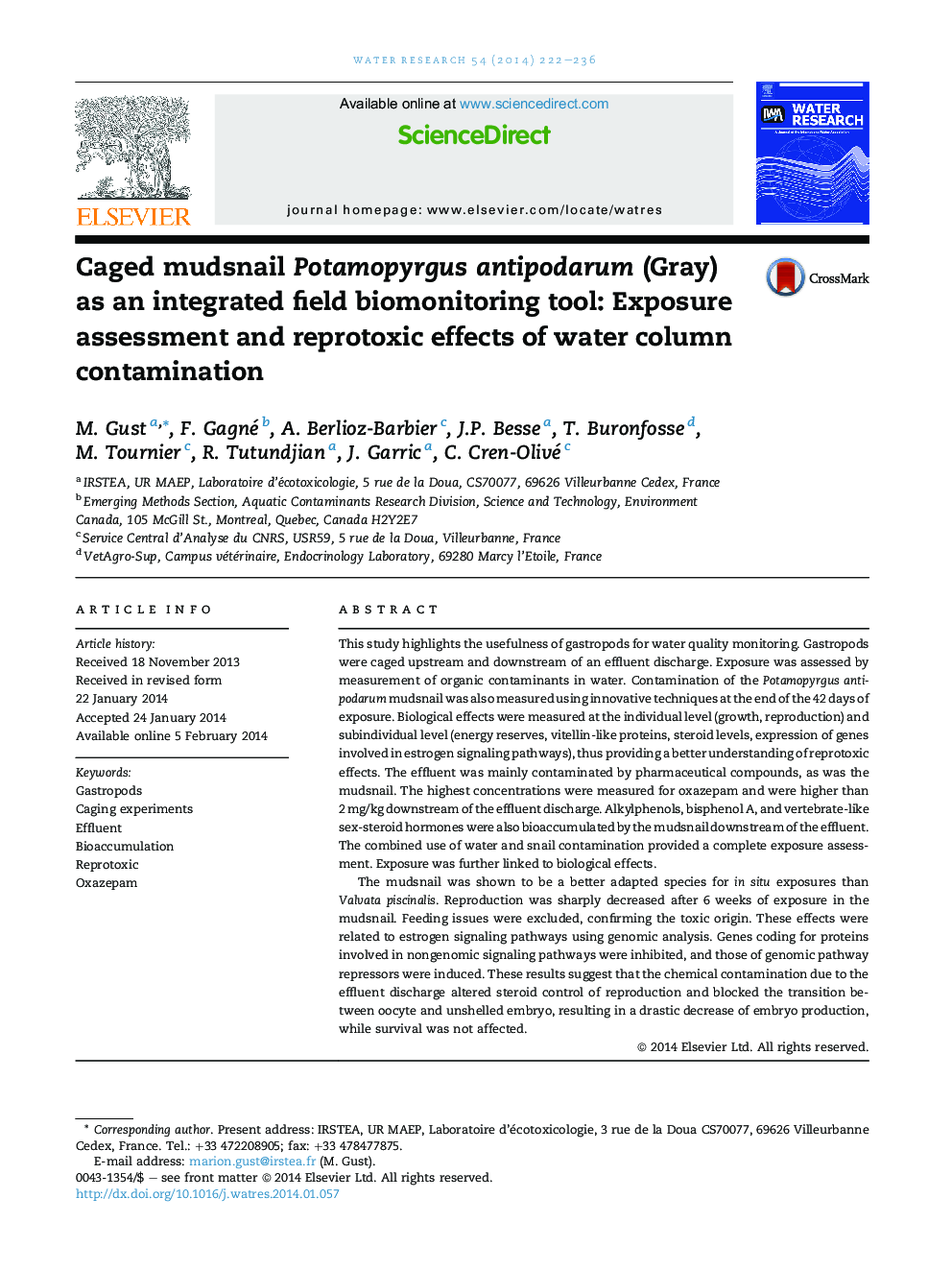| کد مقاله | کد نشریه | سال انتشار | مقاله انگلیسی | نسخه تمام متن |
|---|---|---|---|---|
| 6367071 | 1623114 | 2014 | 15 صفحه PDF | دانلود رایگان |
- Potamopyrgus antipodarum highly bioaccumulates organic pollutants in caging experiments.
- Oxazepam concentrations in snails are higher than 2Â mg/kg.
- Reproduction is decreased downstream of effluent discharge.
- Toxicological origin of the effects are highlighted.
- Endocrine-related mechanisms are at play.
This study highlights the usefulness of gastropods for water quality monitoring. Gastropods were caged upstream and downstream of an effluent discharge. Exposure was assessed by measurement of organic contaminants in water. Contamination of the Potamopyrgus antipodarum mudsnail was also measured using innovative techniques at the end of the 42 days of exposure. Biological effects were measured at the individual level (growth, reproduction) and subindividual level (energy reserves, vitellin-like proteins, steroid levels, expression of genes involved in estrogen signaling pathways), thus providing a better understanding of reprotoxic effects. The effluent was mainly contaminated by pharmaceutical compounds, as was the mudsnail. The highest concentrations were measured for oxazepam and were higher than 2Â mg/kg downstream of the effluent discharge. Alkylphenols, bisphenol A, and vertebrate-like sex-steroid hormones were also bioaccumulated by the mudsnail downstream of the effluent. The combined use of water and snail contamination provided a complete exposure assessment. Exposure was further linked to biological effects.The mudsnail was shown to be a better adapted species for in situ exposures than Valvata piscinalis. Reproduction was sharply decreased after 6 weeks of exposure in the mudsnail. Feeding issues were excluded, confirming the toxic origin. These effects were related to estrogen signaling pathways using genomic analysis. Genes coding for proteins involved in nongenomic signaling pathways were inhibited, and those of genomic pathway repressors were induced. These results suggest that the chemical contamination due to the effluent discharge altered steroid control of reproduction and blocked the transition between oocyte and unshelled embryo, resulting in a drastic decrease of embryo production, while survival was not affected.
Journal: Water Research - Volume 54, 1 May 2014, Pages 222-236
